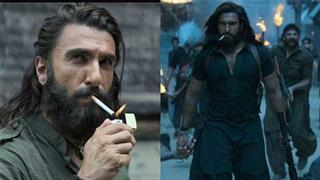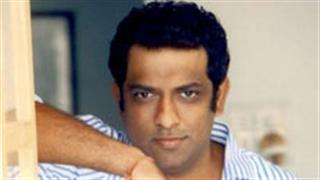Anurag Basu's latest film Barfi!, starring Ranbir Kapoor and Priyanka Chopra in lead roles, is being touted as one that can change Bollywood's perception about the abilities of the disabled. Mainstream Bollywood cinema has always found it tough to seamlessly integrate the differently abled into its plotline.
The physically and mentally challenged have been portrayed as characters that deserve to be either pitied or mocked, but hardly ever simply accepted.
Films that were largely successful in integrating this section of the population with the 'normal' one were immediately tagged as arthouse cinema. But with filmmakers and actors looking to challenge themselves, the arclights have now begun to shine on the differently abled.
Barfi! tells the story of the bond between a deaf and mute hero (Ranbir) and an autistic heroine (Priyanka). When he decided to make the film, Basu was sure that he didn't want to sentimentalise the hero.
`If you spend time with differently abled people, you will get over the notion that they're unhappy, suffering souls. Please don't pity them. They find happiness in the smallest of things.
They celebrate life constantly. It takes normal people much longer to be happy. For me, it was a given from the start: they (the characters) had to be happy.`

Barfi! is only the latest in a growing list of Bollywood films that are trying to look at characters with physical disabilities from a different perspective. Sanjay Leela Bhansali's Guzaarish, Black and Khamoshi, Karan Johar and Shahrukh Khan's My Name Is Khan, Aamir Khan's Taare Zameen Par (TZP), Anupam Kher's Maine Gandhi Ko Nahin Mara and Mani Ratnam's Guru are just a few of the more recent ones that took the stand that the disabled are actually differently abled.
Bringing positivity
Rani Mukerji, who played a deaf, blind and mute character in Black, said the film was an entirely new experience for her. `Doing Black made me realise that we, the supposedly normal and successful people, are insecure everyday, whereas the physically or mentally challenged go through a different, far greater turmoil and are much stronger as human beings.`
Bhansali recalls, `Years ago I decided to make my first film about a couple who are hearing and speech impaired. Everyone told me that making such a film was committing career suicide. 'Who would want to see a film about two people who can't talk or hear?' But I did not care. My heart reached out to these people and I made Khamoshi.`
The film, like Black, had a positive outlook. `At the end of Michelle's (Rani's character) struggle audiences get up and clap for her. It's my greatest achievement.` He recalled that when he made Guzaarish with a paraplegic protagonist, people asked him why he was concentrating on those on the fringes of society.
`Because I want such special people to enter our mainstream of society through mainstream cinema. My hero may not be able to walk but his spirit soars. He has a story to tell, jokes to crack, a life to live. Hrithik in Guzaarish understands the value of life better than you or me.`

While physical disabilities can still be translated onto the screen with a bit of effort, the task gets even tougher when an actor has to portray a mental disorder. Anupam Kher played a man suffering from Alzheimer's Disease in Maine Gandhi Ko Nahin Mara.
`Any other kind of ailment is easy to show. But how do you show Alzheimer's? There's no external prop. An actor has no choice but to BE that person... Such roles and characters are becoming progressively acceptable.`
Negative aspects
Vidya Balan's portrayal of a character with Multiple Sclerosis (MS) in Guru had invited a lot of flak. MS is an autoimmune disorder that can confine a person to a wheelchair, but it is not life threatening the way it was described in the film.
My Name Is Khan (MNIK) was another such film. Many experts claimed immediately after the film's release that Shahrukh's interpretation of a person with Asperger's Syndrome was quite far-fetched. Anita Vesuvala, secretary, Mumbai Chapter of Multiple Sclerosis Society of India, explained why it is important that films give the correct information about any disorder.
`A film makes people aware that a particular disorder exists. If a disease is portrayed properly in a film, then it is definitely helpful. However, if it is shown wrongly, then it gives rise to even more misconceptions, ` she said.
`I wouldn't say that filmmakers should stay away from portraying any disorder when they haven't done proper research on it, though. It also depends on how wrong the portrayal ends up being - whether it is totally wrong or a just a little wrong. But when a filmmaker wants to portray a disorder, why take half-measures? They should do their research.`

Kate Currawalla of the Maharashtra Dyslexia Association (MDA) said that it is important to see how a filmmaker wants to use a particular disability. `Is the film trying to portray the disability or just using it as a hook for the rest of the story? Unfortunately, many times filmmakers choose certain elements they want to use for dramatic purposes. That becomes exploitative.`
Masarrat Khan, CEO, MDA agrees. `Generally, movies and comedy shows use someone's disability or disorder as comic relief - people with a squint, a stammer or a limp are made fun of. Children imitate them and it is tough for us to explain to them that it is not funny for those going through it.`
On MNIK
Dr Rubina Lal, president, Sopan (Society of Parents of Children with Autism Disorders) explained where MNIK got it wrong. `Shahrukh Khan is shown as managing everything. Those with the syndrome do have average or even above average intelligence but you can't deny they have problems.
There are many things they can't do their entire life, ` she said. Masarrat prefers to look at the positive side. `MNIK did not portray the disorder accurately, but atleast it was a serious portrayal and the film did not mock those suffering from it, ` she said.
On Barfi!
Dr Lal added that even Basu hadn't got several things right in Barfi! but despite that, it is a good effort. `I am happy that the film has brought autism into the public consciousness by a lead actress, and there are a few scenes where the events are genuine - like when Jhilmil wants to go to the loo - but it is not real autism. Priyanka has acted well, but she is shown thinking and acting in ways that are not possible for an autistic person.
For instance, Barfi (Ranbir) drops Jhilmil (Priyanka) at the home of an old servant she is very attached to and goes away. She leaves that servant and goes running after him. An autistic person doesn't leave anyone they are really attached to.
And if they are newly attached to someone, they can't express that feeling of attachment. They may throw tantrums but they will not go running after them, calling their name. Another instance is when Jhilmil goes missing.
She calls home and tells her family her whereabouts, which is impossible. I agree the movie is about disabled people enjoying life instead of living in a dark world, but they could have taken one minute out of the three hours or so to give a bit of facts.`

Dr Lal added that Barfi! was not a realistic portrayal of even the hearing impaired. `I know hearing impaired people who have an issue with Ranbir's character. He is a naughty, loveable character but he doesn't use sign language.
The one time he does, it is incorrect. Rani Mukerji had done a better job (in Black), Sanjeev Kumar and Jaya Bachchan in Koshish or even Manisha Koirala had signed very well in Khamoshi. Here, someone or the other reads out everything to him which is not how it happens.`
Good effort
But Dr Lal stays hopeful about the film and its impact on mindsets. `I will still give Barfi! 6.5 or 7 points (out of 10) for the effort to include disabled characters in mainstream cinema as this will do much more for autism awareness than we can do.` The film that she actually credits with a realistic portrayal is Aamir Khan's Taare Zameen Par.
`It was very clearly researched. It stayed at a very realistic level and he also took the trouble to educate the people about learning disabilities.` Currawalla, who admits she is biased about TZP as she was closely associated with it, explains how the film managed to be realistic.
`The script was the result of the complete involvement of Amol Gupte and Deepa Bhatia. The process took six to seven years. It is a credit to Amol's talent as a writer that he was able to distill his experiences with the people he met into the characterisation of the boy, the parents and the teachers.`

Dr Smita Desai, an educational psychologist associated with the Non Governmental Organisation (NGO) Drishti, agrees that it is very important to research the disability before portraying it on screen.
`Often, portrayal of disabilities tends to be cliched. In- depth research is definitely desirable. It is important to put forth information based on research even if it is only a little information.
TZP made a positive impact and increased awareness about dyslexia even though the solutions portrayed were simplistic. Helping a kid learn just with the help of a sympathetic art teacher without showing any counsellor or special educator is not really possible.
I had parents coming in and asking me, 'So if my child gets a good teacher, he will become alright?' But then, MNIK didn't have even that much of an impact in creating awareness about Asperger's Syndrome.`
Dr Lal remains optimistic that all these attempts will bear fruit one day. `If we keep criticising such efforts, then people won't get into it as it becomes controversial. I am sure if more people try, then one day we'll have a proper film on the subject, ` she said.
Why no subtitles?
Asks MiD DAY reader Merril Diniz after watching Anurag Basu's film, `Barfi! is a film I enjoyed immensely. My sister, however, had a different experience.
Deaf from birth, while she appreciated the film visually, she could not follow several sections of the movie with voiceovers and speech between the hearing characters in the film. Due to this, she and her hearing impaired friends lost out on many nuances of the story.
Before watching the film in the theatre, in my heart of hearts I had hoped that the producers would have the presence of mind to add subtitles, so that the film could be followed by an inclusive audience.
This would have made the viewing experience for those who share the protagonist's disability, ie deafness, truly exhilarating. Sadly this was not the case. I request the producers with all my heart to include subtitles so that the deaf can enjoy this beautiful film as much as any of us.
While Barfi uses gestures to communicate in the film, he is uneducated, as is the case with many deaf people in our country. Hence he does not use what has come to be known as 'Indian Sign Language', an official language for the deaf developed by Ali Yavar Jung National Institute For The Hearing Impaired. Hence, for the deaf to follow the story, subtitles would still be ideal.
Nevertheless, I applaud UTV Motion Pictures, director Anurag Basu as well as the actors for venturing into the terrain of disabilities, which is always a tricky one. More such films should be encouraged.`
Kollywood shows the way
The 2010 Tamil film Maa starred differently abled actors and explored the opinion of whether disability should be an obstacle when it comes to falling in love. It was directed by Fathima Beevi, who is largely confined to a wheelchair and had music by the visually impaired composer, G Karthik. Amudha Rajini, who was afflicted by polio, choreographed the songs while SR Rao, who is missing a leg, shot the entire movie.

















